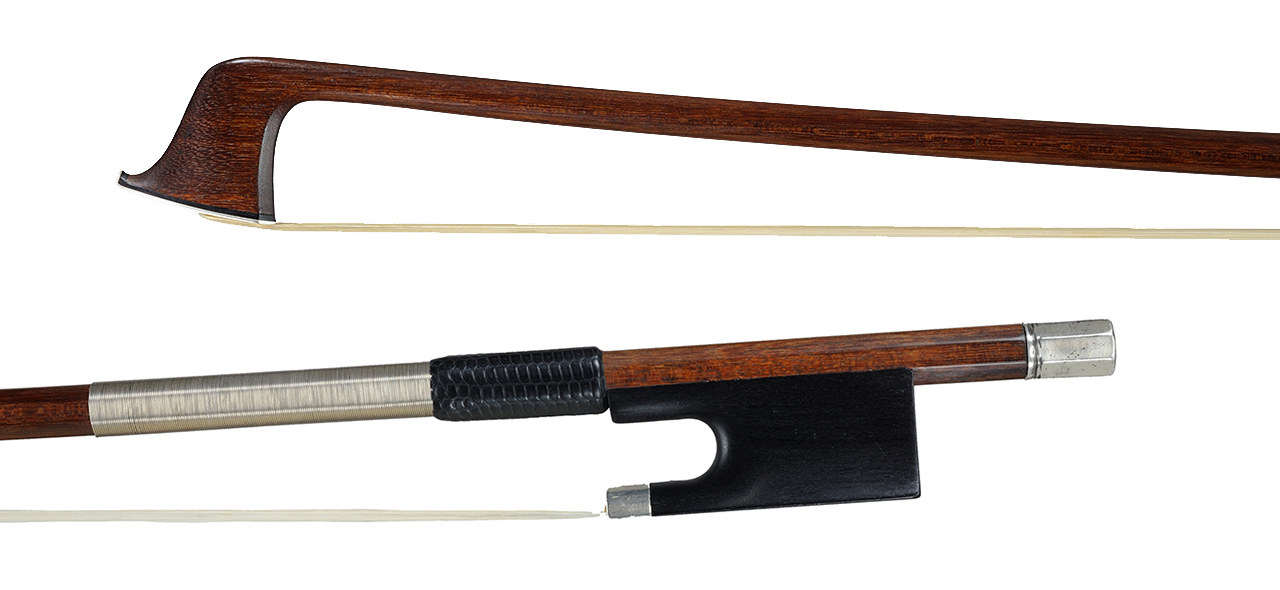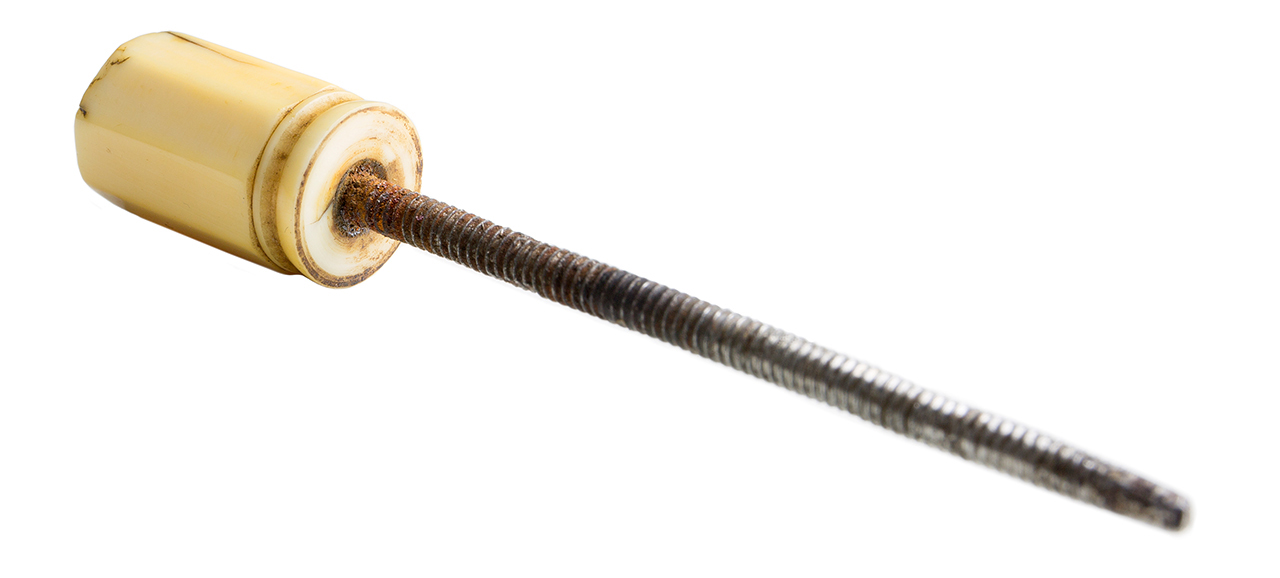Newsletter / December 2015
François Xavier Tourte (1748 – 1835): An examination of a cello bow in excellent condition
The bow under examination, dating back to ca. 1790, is a particularly fine specimen by the greatest of all archetiers, François Xavier Tourte.
It is impressive not only for its outstanding use of materials and workmanship but above all for its immaculate condition in its 225 years of age. Each little detail and the extraordinary level of craftmanship point to the master, making the analogy with the „Messiah“ Stradivarius more than compelling.
The Head
Here, young François Xavier achieved a particularly fine swan head or „col de cygne“. The nose remains elongated and full, the cheeks are chubby and the back of the head is perfectly round and smooth without chamfers.
The Head / angled view
Its expression of sheer elegance paired with a vigorous aesthetic would continue to dominate even fifty years later with Dominique Peccatte, Joseph Henry and Pierre Simon.
The Stick
The stick is crafted from superb quality golden-brown pernambuco, with beautiful figuring and high-spirited flaming. The density of the wood combined with its flexibility and vitality, as well as the power of the workmanship, make this bow the measure of all things in terms of performance and tone production.
The mortise of the handle, cut in the typical F. X. Tourte style, has a Roman “I” above it, which corresponds to the number “I” on the bottom slide.
Tourte dispensed with the stick nipple that became a standard around 1790.
The Stick & Mortise
The Frog
Made from superior quality ebony, the frog is crafted in an open trench form. This basic model would be employed again and again by François Xavier Tourte over the following 10 – 15 years, later mounted with ferule, slide and heelplate.
The Frog
The Frog / angled view
In line with the master’s usual approach, the underslide is cut concavely and the mortise of the frog is undercut, in the typical style of the maker.
The Underslide
The Mortise
Conclusion
This example has an important place in the evolution of the modern bow. It deviates from the Baroque style in a way that lasts beyond attempts such as the the Kremer model. It has the elongated nose and swanhead style but shows modern curve, weight and proportion that helped the bow evolve to its current form. This François Xavier Tourte represents the “zero hour“ of modern bow-making and the very beginning of the development of the bow we are familiar with today. It is a model of modernity and still remains – after 225 years – the benchmark for every ambitious bowmaker. It is no exaggeration to say that there are only a handful of bows by the greatest of all bowmakers whose condition and sheer beauty match the present example.
Authors
Stephan Jansen, Berlin / Isaac Salchow, New York City
Photos
Rachel Drehmann, New York City
Copyright
Isaac Salchow, New York City / Stephan Jansen, Berlin – All rights reserved.













